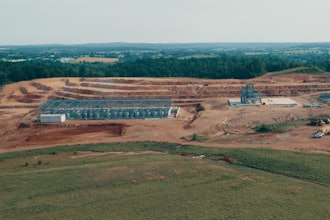Features
Podcasts & video
News
First evidence for early dairy farming in North Africa
21 June 2012, by Tamera Jones
Scientists have found the first direct evidence that prehistoric people in the Sahara used cattle for their milk as long as 7000 years ago.

Rock art image of domesticated cattle, between 5,000 and 8,000 years old, from the Wadi Imha, in the Tadrart Acacus Mountains, Libyan Sahara.
But rather than drinking the raw milk, it seems these early pastoralists used it to produce butter, cheese and yoghurt.
'Milk is one the very few foods that give us carbohydrates, fats and proteins in one go. So being able to use milk like these people did would've made an enormous difference to their health. It would've provided food for life,' says Julie Dunne from University of Bristol, lead author of the study.
Researchers have long known that people living in this region thousands of years ago relied on cattle, sheep and goats long before they started growing plants. Evidence for this comes from images in rock art and cattle bones at archaeological sites.
'Rock art from Saharan Africa, from places like Libya and Algeria, include many depictions of cattle. And in some rare examples, there are even scenes of milking and images of cows with full udders,' says Dunne.

Tracing of rock art image from Teshuinat II rock shelter, South West Libya, showing pastoralists with their pots and cattle.
But cattle bones in cave deposits and near river camps are scarce and poorly preserved, so scientists couldn't be sure what the herds looked like and whether the animals were being raised for milk or meat.
Despite this, Dunne and colleagues from the US and Italy had an inkling they may have used their milk.
'Today it seem impossible that cattle could survive in such a hostile environment as the arid desert land of the Sahara,' write the authors in their report, published in Nature. But 10,000 years ago, this region was completely different from how it is today: it was a much wetter and greener place, which might have supported people living a pastoral way of life.
'There's no doubt that domesticated animals were important to these people. The trouble was we needed chemical evidence to support our idea that they were milking them,' says Dunne.
People started making pottery early on in northern Africa, and Dunne and her colleagues realised this was an opportunity to analyse residues left in the pottery.
So, they decided to try analysing organic residues found in pottery excavated from the Takarkori rock shelter in the Tadrart Acacus Mountains in Libya.
'Nobody had thought to look at pots in North Africa before now,' says Dunne.
Their findings show that half the vessels they analysed had been used to process dairy products. But it looks like these early pastoralists didn't drink the milk directly, instead relying on products, such as butter and yoghurt they could make with it.
'This may be because their guts hadn't yet evolved the enzyme necessary to digest a specific type of sugar found in milk called lactose,' explains Dunne.
'So as well as identifying the early adoption of dairying practices in Saharan Africa, these results provide a background for our understanding of the evolution of the lactase persistence gene which seems to have arisen once prehistoric people started consuming milk products. It really shows evolution happening over about 2000 years, almost before your eyes.'
The lactase gene is found in Europeans and in some Central African populations. This means that it's likely that people moved with their cattle from the Near East into eastern Africa around 7000 to 8000 years ago.
Dunne says the next step is to look further across North Africa to see if she can build a time-line of the adoption of dairy practices.


















